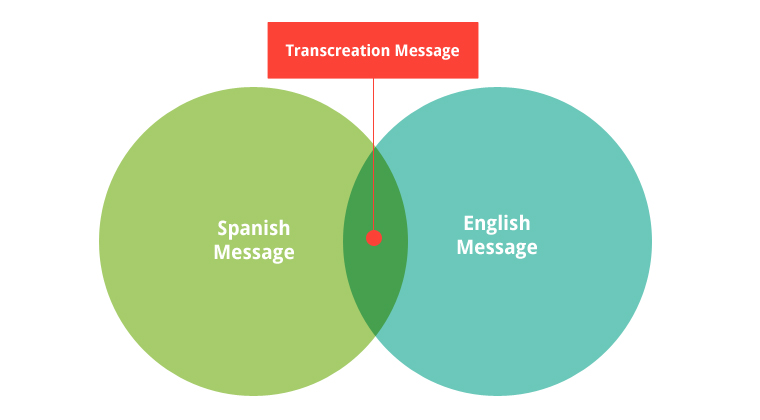Frame Switching, Code Switching and Transcreation
Cultural Frame switching definition
In all the research out there on acculturation, assimilation and multicultural communication, “code switching” and “frame switching” present some of the more interesting food for thought in the growing discipline of bicultural marketing.
It’s also the body of science that describes how and why CultureSpan developed its Transcreation process to help clients reach bilingual/bicultural audiences. After reading this you may come away with more questions than answers, but that’s OK. You can always call or email us for in-depth conversation on how this can apply to your brand.

Let’s dig in. Studies in linguistics and other social sciences generally define “code switching” as the process of using more than one language in conversation or other communicative acts. The concurrent use of different languages requires the brain to switch back and forth between different codes or “language varieties” as one transmits and receives messages. Studies reported in The New York Times have even suggested that this process can make one smarter, having a profound effect on the brain by improving cognitive skills and helping prevent dementia in later years.
“Frame switching” refers to the process by which multicultural individuals with experience in different cultures seem to access different culture-specific mental frames depending on the languages used. That is, words in two different languages that may seem to be exact translations of each other are likely to have different sets of culture-specific conceptual associations.
A classic example of this theory played out in the late 1990’s when the National Fluid Milk Processor Education Board’s successful “Got Milk?” campaign was translated literally into Spanish as “Tienes (Do you have) Leche (milk)?” for use in its Hispanic media debut. Unfortunately, that particular phrase is taken literally in the Hispanic culture to mean, “Are you lactating?” With some red-faced apologies, the Board immediately pulled and re-worked the campaign.

The notion of effectively advertising to U.S. Hispanics by simply translating English messages into Spanish has been widely disputed and pretty much debunked by a mountain of both corporate and academic research. And just as words have different meanings and contexts, so do images, icons, colors, sounds and other symbols and representations of different cultures. The language meaning and syntax may be correct but if the on-screen or printed page model(s) are not of the same or similar race or ethnicity as the viewer, or if the music track is not culturally relevant, or if the context in which the message is presented does not strike a cultural chord with the message recipient, then communication may be less than effective. And at the other extreme, stereotypes don’t work either. Think about abuelita, gangbangers, maids and other typical Hispanic typecasts present in the media.
Another contextual consideration in bicultural marketing is the product itself. Will the product appeal to the bicultural at the cognitive, affective and behavioral levels? Will it make sense to them to use the product? Will they see a value proposition? Will the product evoke an emotional response? Will they like it and want to have it? Will it fit or help to enhance their lifestyle? Will they use it to improve their lives and be loyal to the brand? Is it culturally relevant to a bicultural consumer?
THE MEANING OF ACCULTURATION
That last question is the most important and probably the most difficult to answer. It’s very difficult to know where a potential customer is on the acculturation continuum. Based on language use and products and services, food preferences, religious affiliation, surname and dozens of other dimensions of acculturation, how does one determine if someone else is truly bicultural? How deeply have they truly internalized the two cultures? Which one do they live in most often? What is the right “code” to use to communicate to that person and in what identity “frame” should the message be presented?
Businesses, brands and agencies that are committed to bicultural marketing - or considering it as a way to stay competitive - should be asking these questions and investing in ways to capture market share.
CultureSpan Marketing is a full-service firm specializing in reaching general and Hispanic markets in a wide range of industries, including: airports, healthcare, banking and credit unions, highway development, gaming and large-scale utilities (just to name a few). With this depth of experience, we can quickly ramp up to meet your needs – especially if you’re seeking to make inroads with the Hispanic market and the huge potential that it represents. Want to learn more about how CultureSpan can help you? Call me at (915) 581-7900 or shoot an email to gabe.acuna@culturespanmarketing.com.